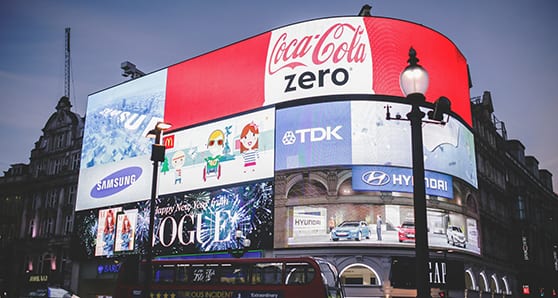 Advertising can stimulate desire. Not that any advertising I ever participated in when I was single resulted in crowds of female admirers.
Advertising can stimulate desire. Not that any advertising I ever participated in when I was single resulted in crowds of female admirers.
However, working in the health food industry, I would often strive to create in my customers a desire for better health. My ads would try to kindle a response that would generate traffic in my business, enabling me to sell the products that would make a difference for people.
Advertising can also make people mad.
I remember the first time I upset people with my marketing. I was the advertising sales person for my college newspaper. I ran an ad for the local pub, suggesting to students that they would enjoy their beer much better at this pub than at the campus drinking hole.
Apparently, the college rag shouldn’t promote such establishments. The ad caught the attention of some people in authority and I was reprimanded.
Over the years, some of my advertising has made other people angry – on purpose.
Terry O’Reilly, author of the book This I Know and host of the Under the Influence radio show and podcast, states that when we’re marketing and advertising our products, “we need to connect with the audience emotionally.”
If we fail to connect somehow in an emotional sense, we won’t be able to get the response we’re looking for.
The purpose of all business communication – whether from a business, non-profit or government – is to get a response. In business, that response is typically to drive leads that our sales team can close.
But your advertising might produce an effect totally opposite to what you’re trying to do. How often do we see bad advertising that just annoys us?
Sometimes those ads are wasting space in a publication, interrupting our time on the radio, TV (if anyone is still watching TV) or social media, or perhaps it’s a billboard blocking the view.
It’s not that the company spending well-earned money intends to upset or annoy you. The truth is that most advertisers don’t really have a clue about how to get the response they want. They believe if they advertise where people might see them, customers will flock into their business.
Wrong!
Good advertising stands out because it’s so rare. Think about a time when you looked at an ad and it really captivated you, caught your attention and made you feel an emotion. It’s difficult to create that kind of ad.
Sometimes we respond to advertising because we happen to need that item and the ad is placed at the right time in the right medium. The advertisers have done something right, since they know where you are. But how they capture your attention is weak.
More often than not, we respond to advertising because we’re searching to fill our needs, not that the ads have reached us.
Too often, advertisers try to get new customers rather than marketing to their existing customers. Studies show that it takes eight times more money to get a new customer to buy from us than to sell more to an existing customer.
When we have a relationship with someone, isn’t it easier to build on that friendship than to put the effort into making new friends? (Not that we couldn’t use some new friends sometimes.)
Your advertising should make people mad, sad, happy, joyful, caring or experience whatever emotion you’re trying to illicit. Good advertising works to capture attention and get responses. It shouldn’t be a waste of money.
Next time you look at an ad or are building an advertisement campaign, consider if it’s really going to be effective or just satisfy your need to spend money.
If you’re not great at doing the work yourself, start by asking a media rep to help you. Chances are they want you to get results as well.
Dave Fuller, MBA, is an award winning business coach and a partner in the firm Pivotleader Inc. Comments on business at this time? Email [email protected]
The views, opinions and positions expressed by columnists and contributors are the author’s alone. They do not inherently or expressly reflect the views, opinions and/or positions of our publication.


